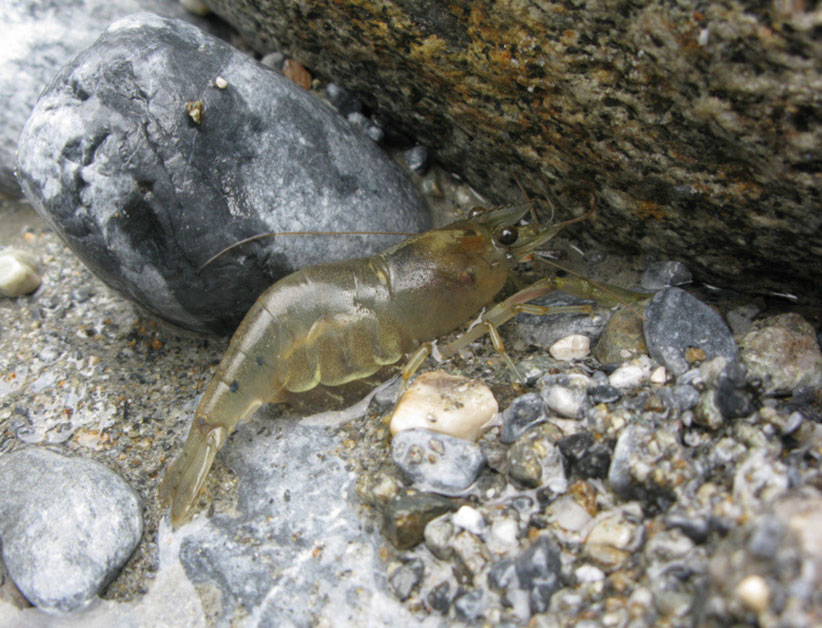Most of Taroko National Park is undisturbed wilderness, and its wildlife is diverse. So far, l52 species of birds have been recorded in the park, including l4 species unique to Taiwan, such as Swinhoe's Pheasant(Lophura swinhoii), Formosan BIue Magpie (Urocissa caerulea) and the Fire-breasted Flowerpecker(Dicaeum ignipectus). At least l5 species of amphibians are found along the rivers and on the medium-altitude mountain slopes. Researchers have also identified 302 species of butterflies. In addition, 46 species of large mammals, including the black bear (Ursu<=Selenarctos> thibetanus formosanus <Swinhoe>), Formosan Macaque(Macaca cyclopis), Formosan Serow (Naemorhedus swinhoei), Formosan wild boar (Susscrofataivanus), and Formosan Sambar Deer or Taiwan Shui-Lok deer (Cervus unicolor Swinboei), are found in abundance in the many undisturbed natural areas. 35 species of reptiles and 21species of fresh water fish are also found in the park area. Of particular interest to researchers are the Formosan Macaque(Macaca cyclopis) and Formosan Serow (Naemorhedus swinhoei); Cryptobranchus japonieus (amphibian) ;Hsuehshan grass lizard (Takydromus hsuehshanensis Lin & Cheng); Kikuchi's Turtle-Designed Snake or Taiwan Mountain Pitviper (Trimeresurus gracilis Oshima ); Taiwan Freshwater Trout (Oncorhynchus masou formosanus); Heng-chun birdwing butterfly (Troides aeacus kaguya <Nakahara & Esaki> ),and The dryad (Minois nagasawae).


Deep in the mountains, at the source of the rivers that sparkle and gurgle in the sunlight, the Cryp-tobranchus japonieus (amphibian) have survived and bred for hundreds of thousands of years. After the glacier retreated, these creatures, living in the mountains above the 2,000 meter level, spread out and became separate populations because of isolation by steep landforms. They now have in golden, milky or dark brown hues, a phenomenon of metamorphosis caused by gene loss.
As you go down the mountains, you see the vast Yushan cane grasslands or (dwarf bamboo) facing you. The chirping sounds you hear can be traced to the Vinaceous Rose-finch (Carpodacus vinaceus), to the Finches hopping around, to the Formosan Laughing Thrush (Garrulax canorus Swinhoe ) flying swiftly by, and to the solitary Spotted Nutcracker (Nucifraga caryocatactes) standing on large rocks. Sometimes, you can see the beautifully patterned Hsuehshan grass lizard sunbathing lazily on the stones. You may see some weasel excreta; or you may even see ancient varieties of rats, such as the Formosan White-bellied Rat (Rattus culturatus) or the Formosan Field Mouse (Apodemus semotus). Occasionally, on the collapsed mountain wall, extending hundreds of meters, you can find the footprints and excreta of the Formosan Serow. These are evidence of the natural and undamaged ecosystem in the park.

Walking on trails in the Yushan cane grasslands, it is quite common to see footprints of the Formosan Wild Boar (Susscrofataivanus) and the Formosan Reeve's Muntjac. Animals of many different kinds inhabit the forest. In the upper part of the forest one can see squirrels hopping, flying squirrels gliding and Formosan Macaque climbing the cliffs. In the lower part of the forest there are not only mammals, but also large birds, such as members of the family Galliformes, especially the colorful Mikado Pheasant (Syrmaticus mikado) and Swinhoe's Pheasant(Lophura swinhoii ), both unique to Taiwan and worthy of conservation.
In the mixed-and broad-leaved forests at medium and low altitudes, the variety of vegetation supports a wide range of animal species. For example, most of the species of birds that inhabit the park can be seen here, especially as one travels the Central Cross-Island Highway from Dayuling to Ci'en, and also in the Taosai River valley and Shakadang area. The Formosan Yuhina (Yuhina brunneiceps Ogilvie-Grant), Red-headed Tit (Aegithalos concinnus), Steere's Babbler (Liocichla steerii.) , Formosan Blue Magpie (Urocissa caerulea) , Muller's Barbet (Megalaima oorti) and Yellow-throated Marten (Martes flavigula chrysospila ) are just a few of the species in abundance
At still lower elevations, in Shakadang area one can see butterflies such as Graphium Sarpendon, Papilio Thaiwonus, and Orange-tip (Hebomoia Glaucippe Formosana). Most species of butterflies that inhabit the park can be seen here in great numbers. There are also many butterflies near Lianhua Pond and in the Taosai River Valley.

